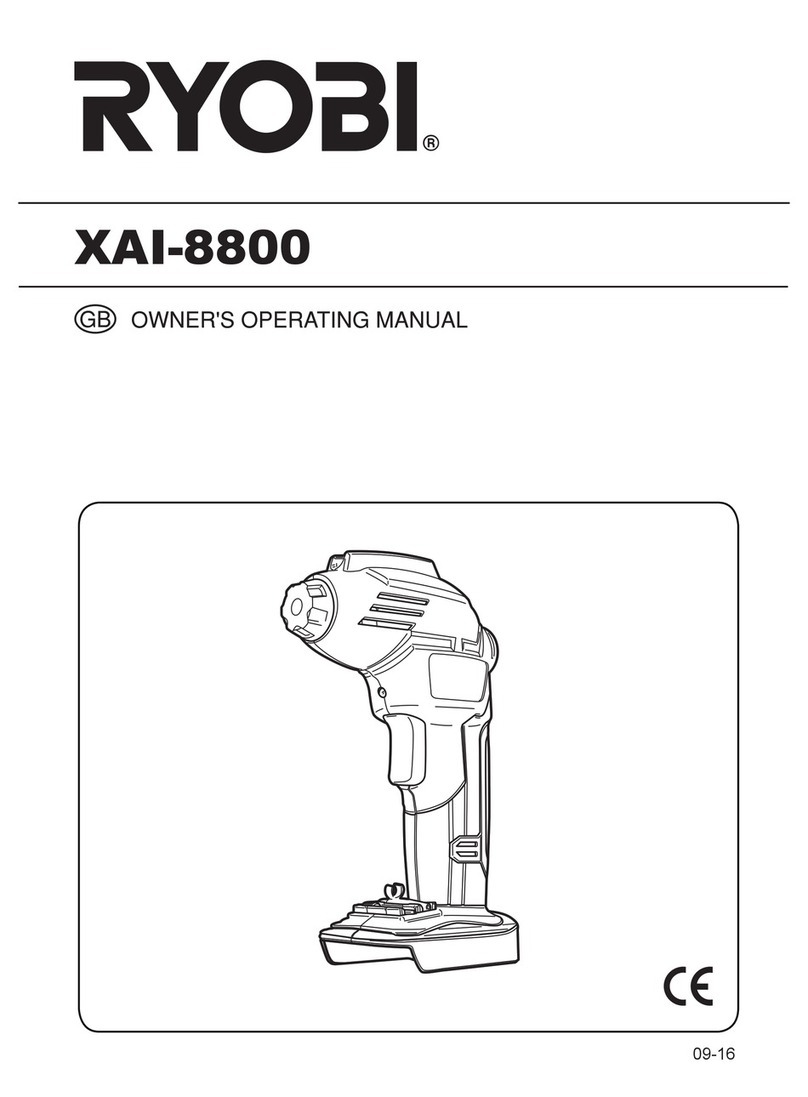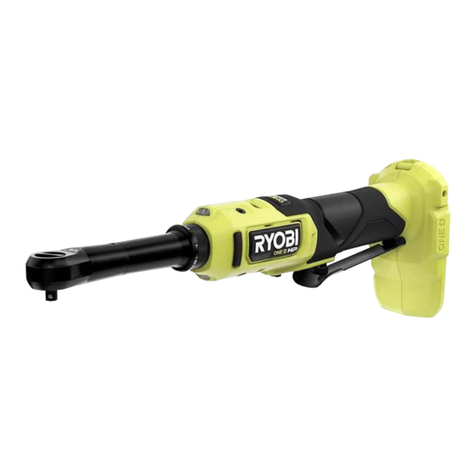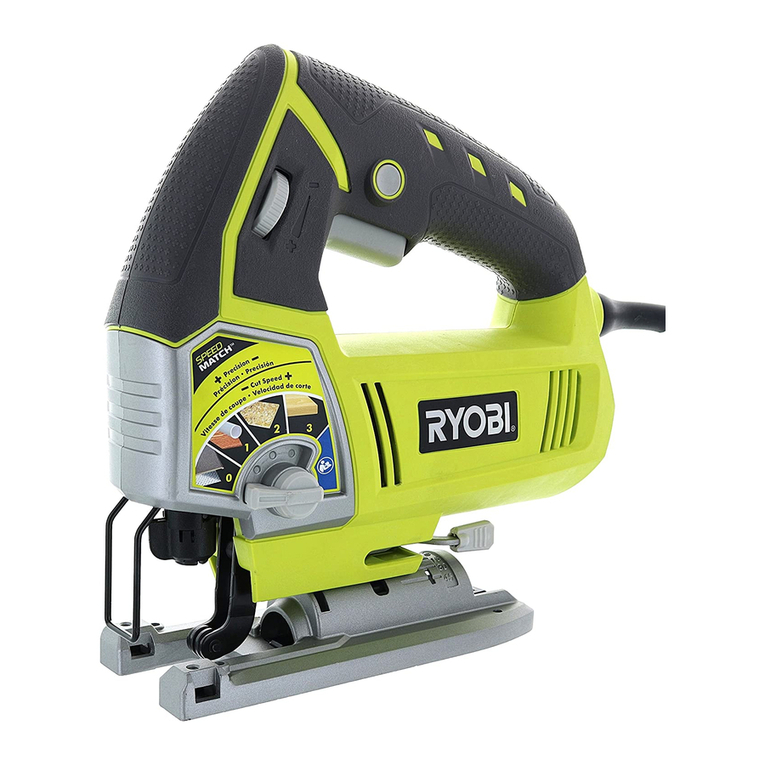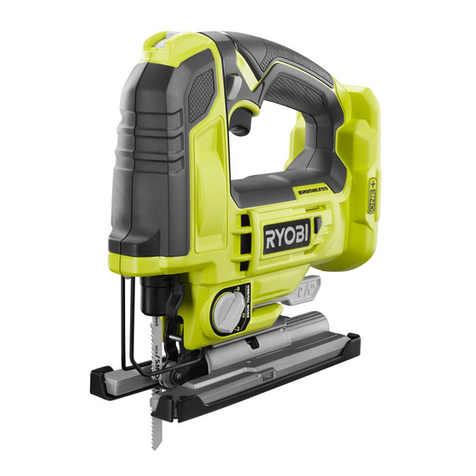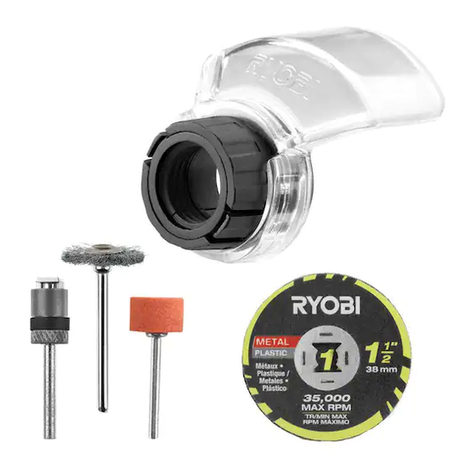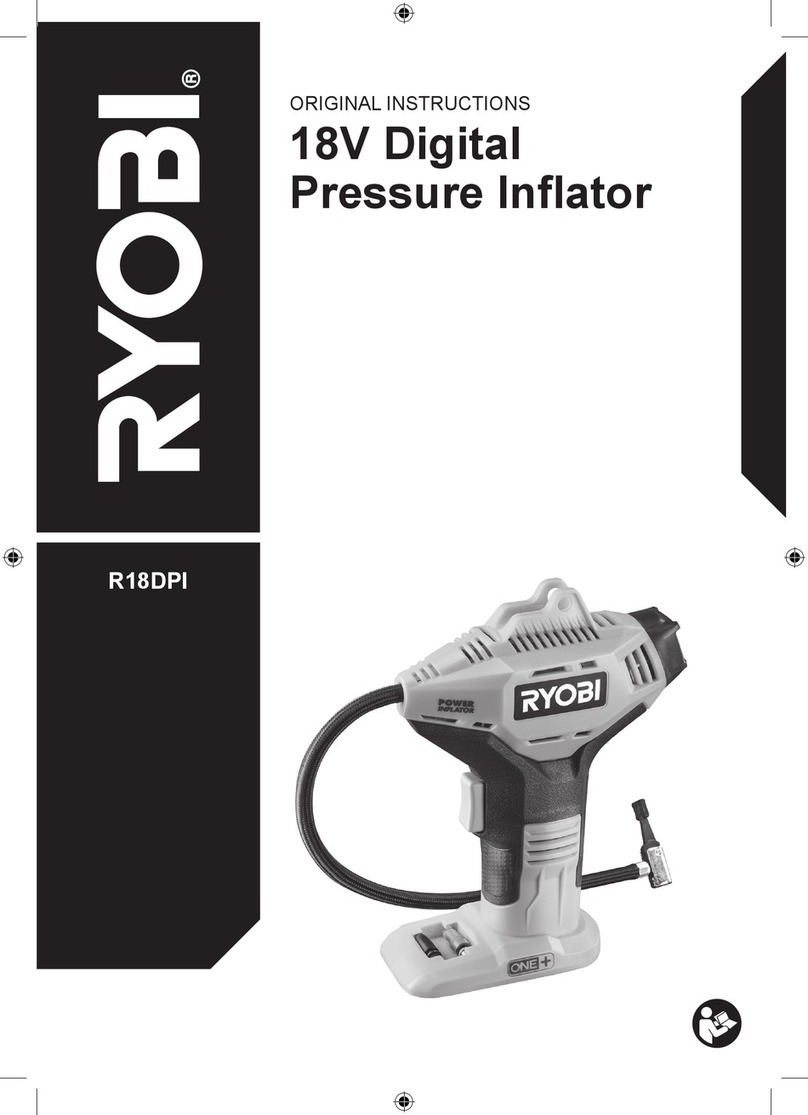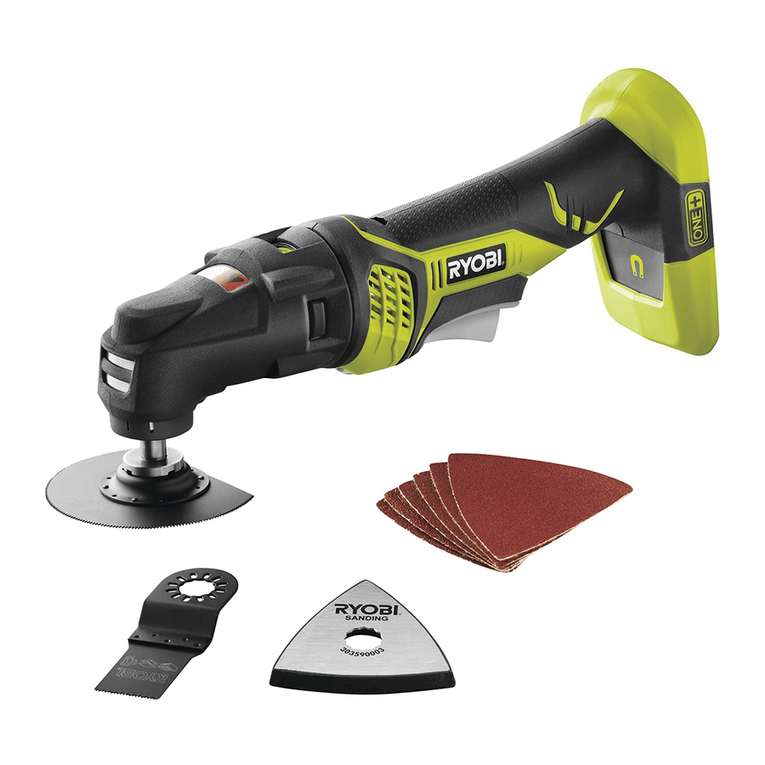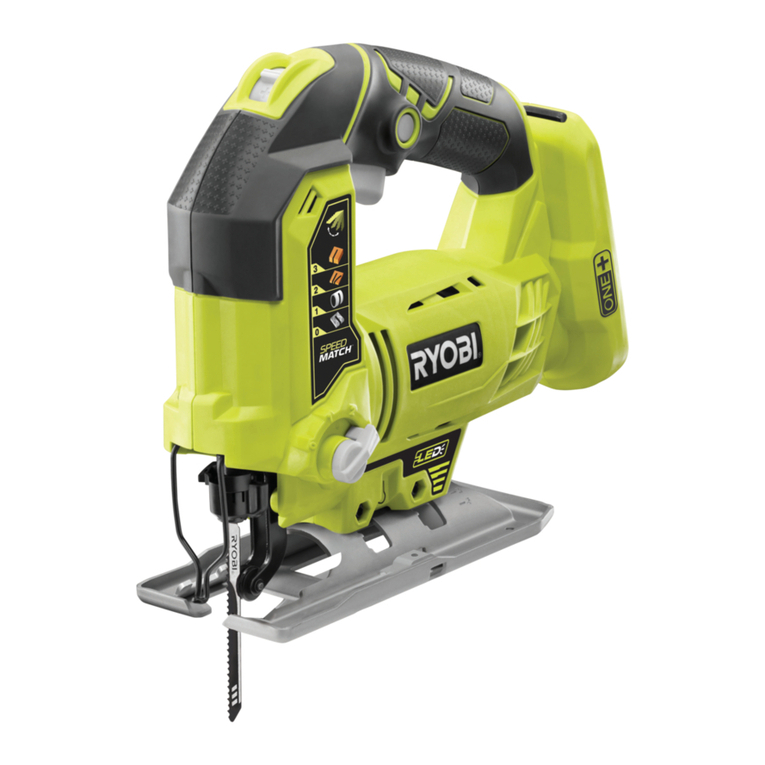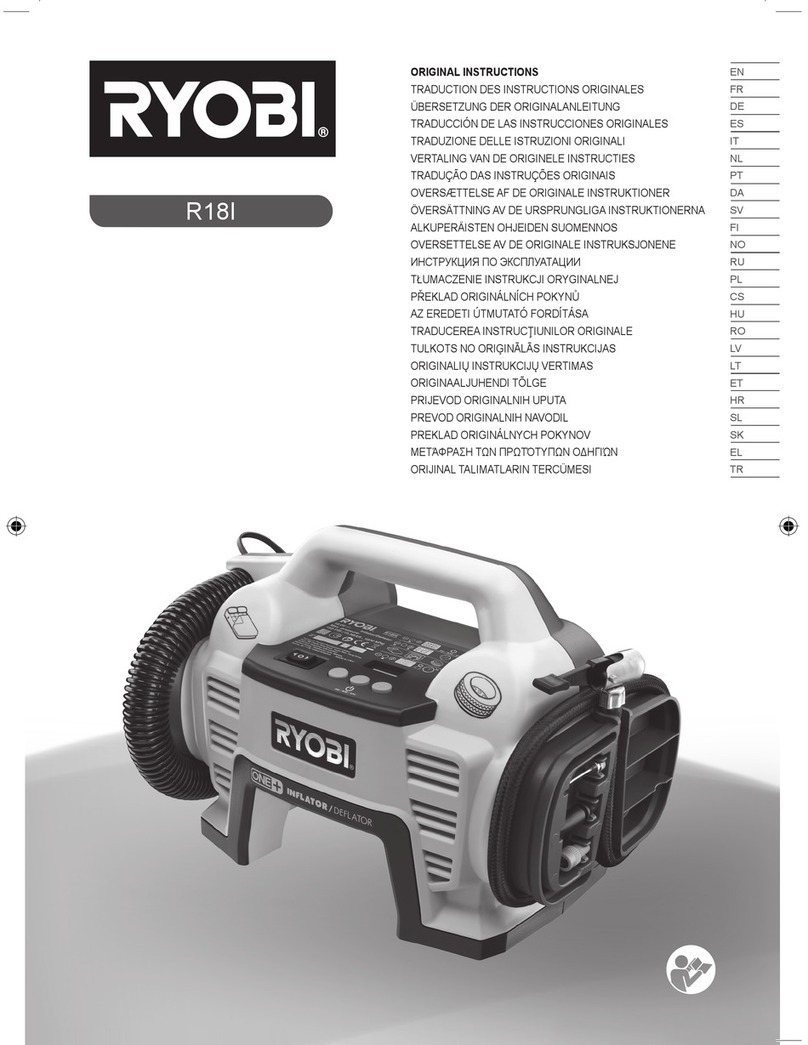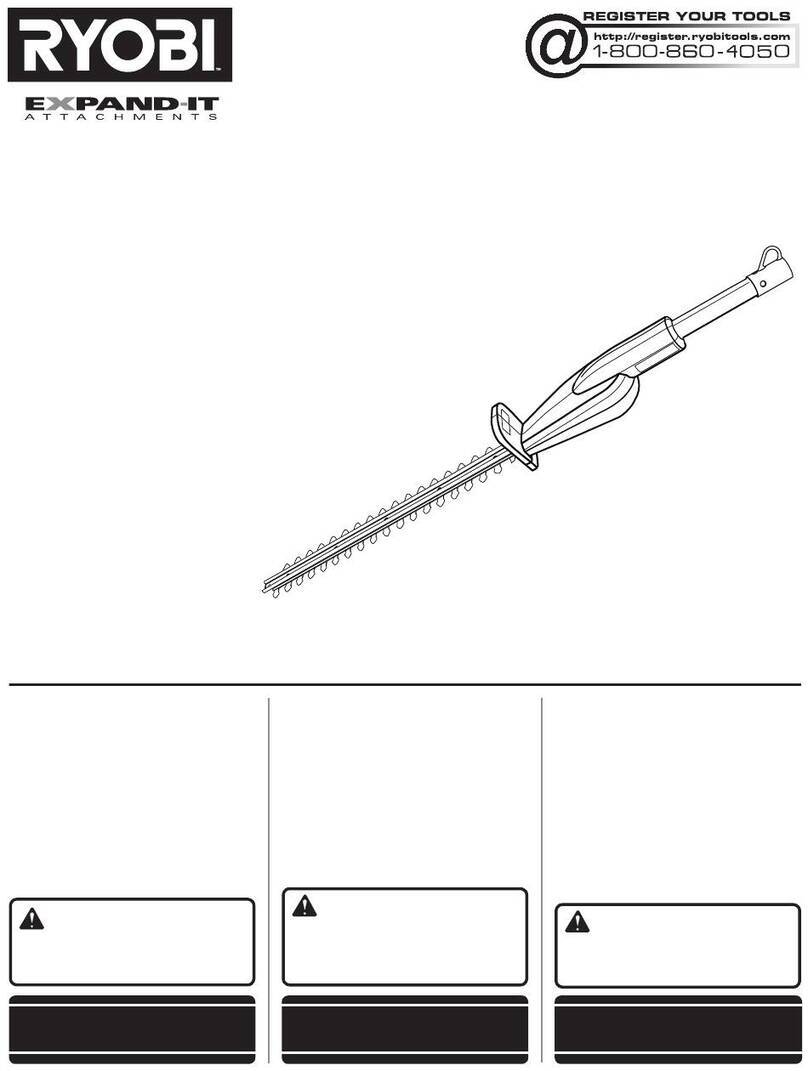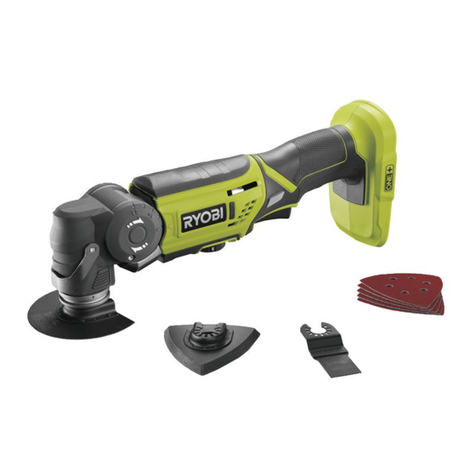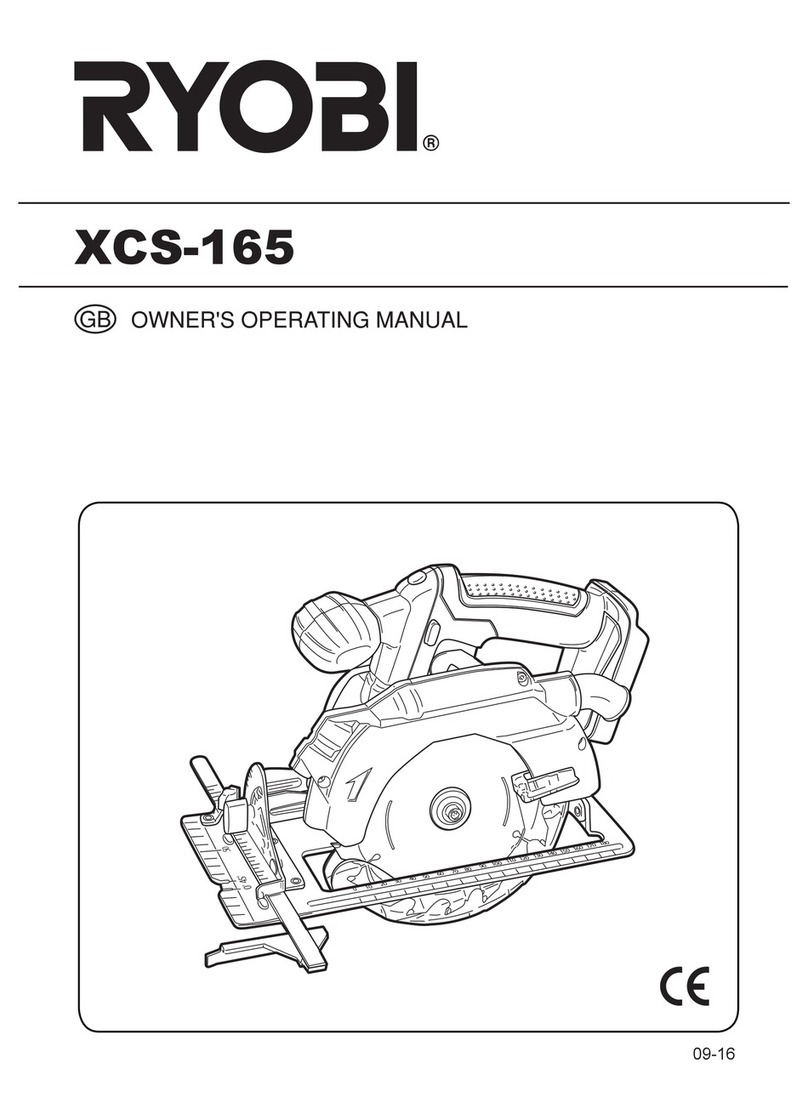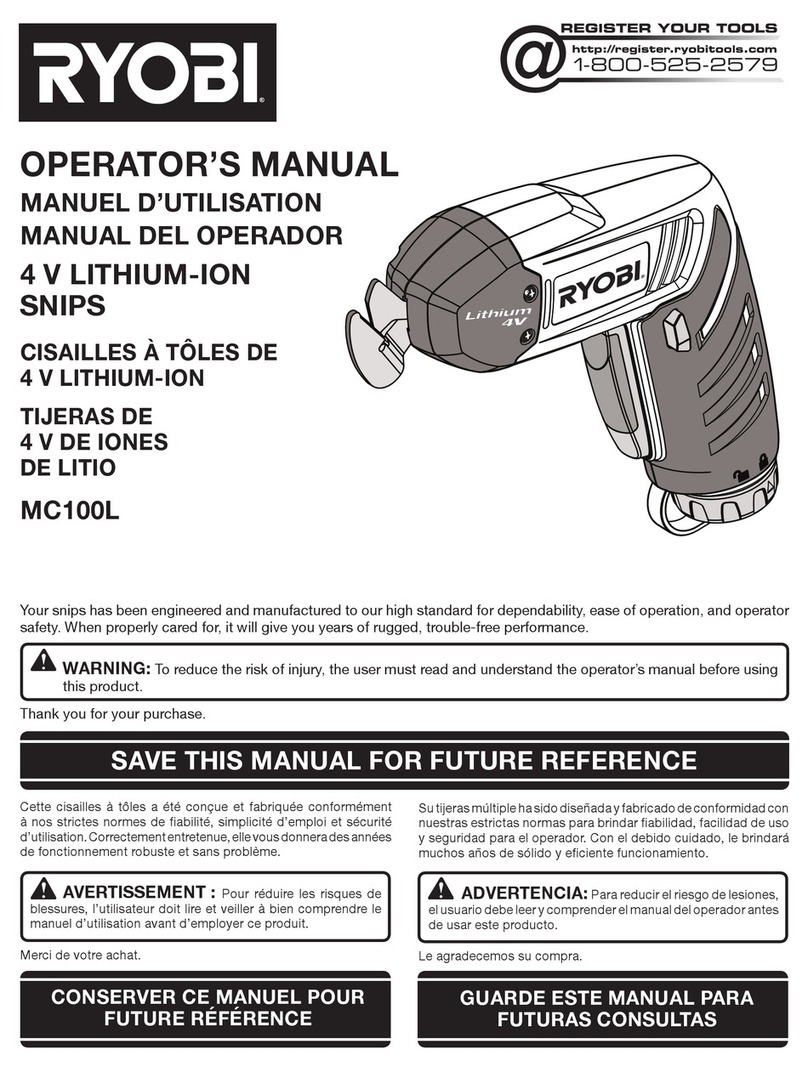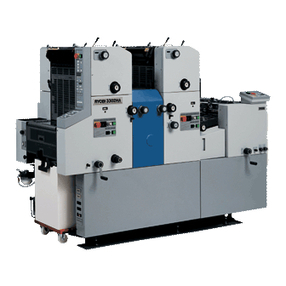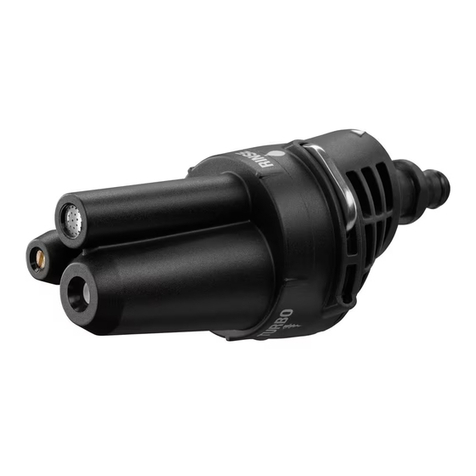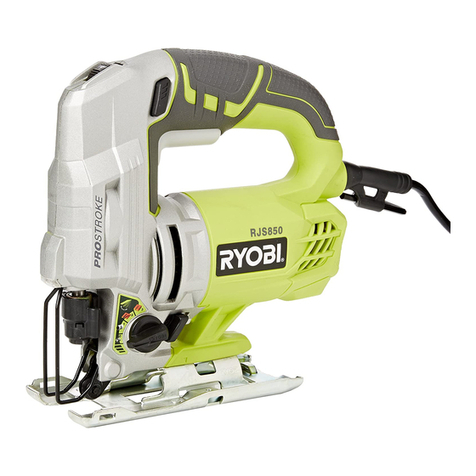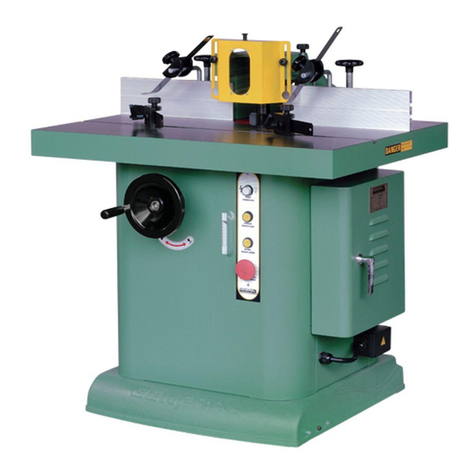
Safety
2
POWER TOOL USE AND CARE
ŶDo not force the power tool. Use the correct power
tool for your application. The correct power tool will
do the job better and safer at the rate for which it was
designed.
ŶDo not use the power tool if the switch does not turn
it on and off. Any power tool that cannot be controlled
with the switch is dangerous and must be repaired.
ŶDisconnect the plug from the power source and/
or remove the battery pack, if detachable, from
the power tool before making any adjustments,
changing accessories, or storing power tools. Such
preventive safety measures reduce the risk of starting
the power tool accidentally.
ŶStore idle power tools out of the reach of children
and do not allow persons unfamiliar with the power
tool or these instructions to operate the power tool.
Power tools are dangerous in the hands of untrained
users.
ŶMaintain power tools and accessories. Check for
misalignment or binding of moving parts, breakage
of parts and any other condition that may affect the
power tool’s operation. If damaged, have the power
tool repaired before use. Many accidents are caused
by poorly maintained power tools.
ŶKeep cutting tools sharp and clean. Properly
maintained cutting tools with sharp cutting edges are
less likely to bind and are easier to control.
ŶUse the power tool, accessories and tool bits etc.
in accordance with these instructions, taking into
account the working conditions and the work to
be performed. Use of the power tool for operations
different from those intended could result in a
hazardous situation.
ŶKeep handles and grasping surfaces dry, clean
and free from oil and grease. Slippery handles and
grasping surfaces do not allow for safe handling and
control of the tool in unexpected situations.
SERVICE
ŶHave your power tool serviced by a qualified repair
person using only identical replacement parts.
This will ensure that the safety of the power tool is
maintained.
JIGSAW SAFETY WARNINGS
ŶHold the power tool by insulated gripping surfaces,
when performing an operation where the cutting
accessory may contact hidden wiring or its own
cord. Cutting accessory contacting a “live” wire may
make exposed metal parts of the power tool “live” and
could give the operator an electric shock.
ŶUse clamps or another practical way to secure and
support the workpiece to a stable platform. Holding
the workpiece by hand or against your body leaves it
unstable and may lead to loss of control.
ŶUse the dust collection device or connect a dust
extraction vacuum when operating the product.
ŶKeep mains lead clear from working range of the
machine. Always lead the cable away behind you.
ŶWear a dust mask.
Additional safety instructions
ŶAvoid running the product at low speeds for extended
periods of time. Running at low speeds under constant
usage may cause the product to become overheated.
If this occurs, cool the product by running it without a
load at full speed.
ŶUse the correct dust collection system as per the
instructions in this manual.
WARNING
Dust from certain paints, coatings, and materials may
cause irritation, or allergic reactions to the respiratory
system. Dust from wood such as oak, beech, MDF, and
others are carcinogenic. Materials containing asbestos
VKRXOG RQO\ EH ZRUNHG RQ RU SURFHVVHG E\ TXDOL¿HG
specialist operators.
RESIDUAL RISKS
Even when the product is used as prescribed, it is still
impossible to completely eliminate certain residual risk
factors. The following hazards may arise and the operator
should pay special attention to avoid the following:
ŶInjury caused by vibration
–Use the lowest speed setting which achieves the
cutting, limit exposure. See Risk Reduction.
ŶInjury caused by dust
–Dust may enter the eyes or respiratory system.
Wear eye protection at all times. Wear appropriate
dust control mask with filters suitable for protecting
against particles from the material being cut. Do
not eat, drink, or smoke in the work area. Ensure
adequate ventilation.
ŶInjury caused by electric shock
–The blade may contact hidden wiring, causing
parts of the product to become live. Always hold
the product by the designated handles and take
care when blind-cutting into walls and floors where
cables may be hidden.
ŶInjury caused by contact with the blade
–The blades are very sharp and will become hot
during use. Wear gloves when changing blades.
Keep hands away from the cutting area at all times.
Clamp the workpiece whenever possible.
ŶInjury caused by noise
